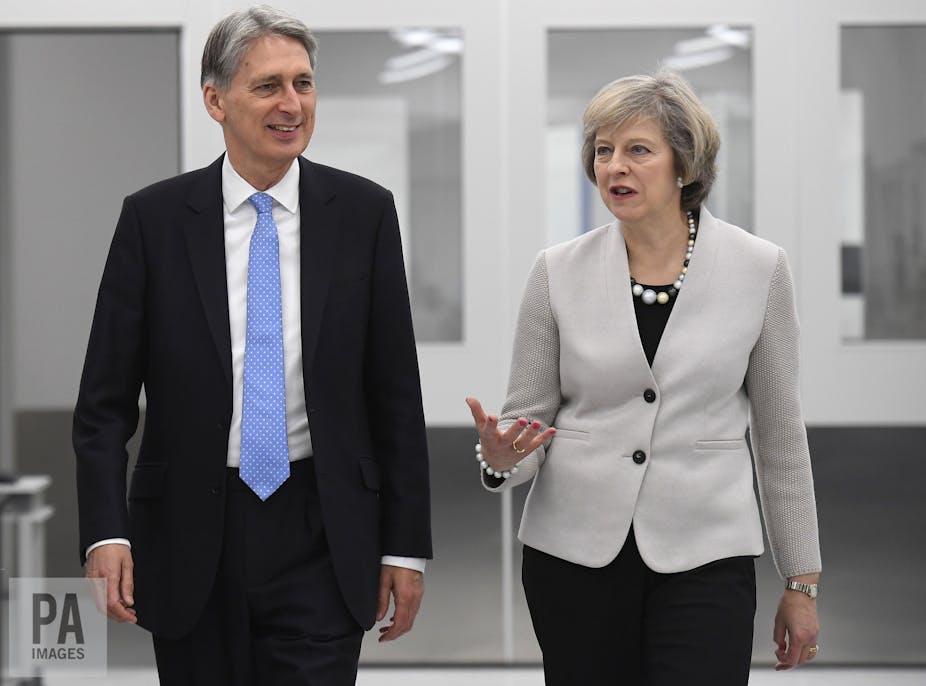A tax called national insurance has become the centre of a row within Britain’s ruling Conservative Party. The recent budget announced a rise in the tax for the self-employed (from 9% to 11% on profits above £8,060 – still less than the 12% paid by employees). But a number of Conservative MPs have strongly criticised the announcement, forcing the prime minister to delay any changes until autumn.
So what is the tax at the centre of this debate and how significant is the rise? National insurance is a tax on pay, paid by employees, their employers and the self-employed. But it’s not just a tax – by paying some types of national insurance, you build up an entitlement to claim certain state benefits, including the state retirement pension and various benefits payable on death to your spouse or partner, or to you when you are unable to work.
This principle of benefits that you contribute to was first introduced in the UK in 1911 and became enshrined in the Beveridge reforms of the 1940s that still underpin today’s welfare state.
There are different types of national insurance contribution, called “classes”. They are paid by different people and carry different benefit entitlements. The main classes are summarised here:
What it pays for
Part of national insurance contributions help to fund the National Health Service and the rest are paid into a ring-fenced fund used to pay benefits. In 2016-17, Class 1 contributions paid by employees and employers brought £94.3 billion into the fund and Class 2 and 4 contributions paid by the self-employed brought in £2.2 billion. Class 3 voluntary contributions brought in less than £0.1 billion.
Through their Class 1 national insurance contributions, employees build up entitlements to claim state pension, bereavement benefits for their spouse or civil partner if they die, and benefits if they are unemployed or off work sick. In addition to these national insurance benefits, employees must by law be provided with “statutory payments”, such as sick pay and maternity pay.
These statutory payments are not paid out of national insurance, but directly by the employer – although small employers can claim back some or all of the cost from the state. Employers often choose to run their own sick pay and maternity schemes that are more generous than just the statutory payments.
Self-employed people, with their lower contributions, build up entitlements to state pension, bereavement benefits, maternity allowance and benefits if ill. However, their maternity and sickness benefits tend to be less than the equivalent sums that employees can get and, until April 2016, this was also the case with the state pension. The following table reflects how the self-employed have been paying lower national insurance than people who are employed on the same earnings.
The big one: pensions
The state retirement pension is by far and away the largest benefit covered by the national insurance fund. In 2016-17, the fund paid out £98 billion in benefits, of which £92 billion (94%) was for state pensions.
For people reaching their state pension age before April 6, 2016, their state pension is made up of two parts: a basic state pension which is £119.30 a week in 2016-17; and an additional pension, which on average adds another £30 a week. Employees could get the additional pension, but not the self-employed – and this is the key reason why the self-employed have been paying lower National Insurance contributions.
But, as of April 6, 2016, the government introduced a new “flat-rate” pension. Everyone reaching state pension age on or after April 6, 2016 qualifies for this. This essentially rolls up the average additional pension with the basic pension to produce a new combined pension for the self-employed, as well as employees. In 2016-17, the flat-rate pension is £155.65 a week.
So the argument put forward by the government in its latest spring budget is that, now the self-employed are building up this higher pension in the same way as employees, the justification for lower National Insurance contributions is largely gone.
Of course, there are many other differences between being an employee and being self-employed. As a self-employed person, you don’t get holiday pay, employer contributions to a private pension scheme or redundancy pay if work dries up. You also have to bear the costs of your own workplace, equipment, insurance, and so on. On the other hand, you have greater freedom over your time and control of your working environment, as well as more expenses you can claim against income tax. These are all valid areas of difference, but are outside the scope of the national insurance scheme.

